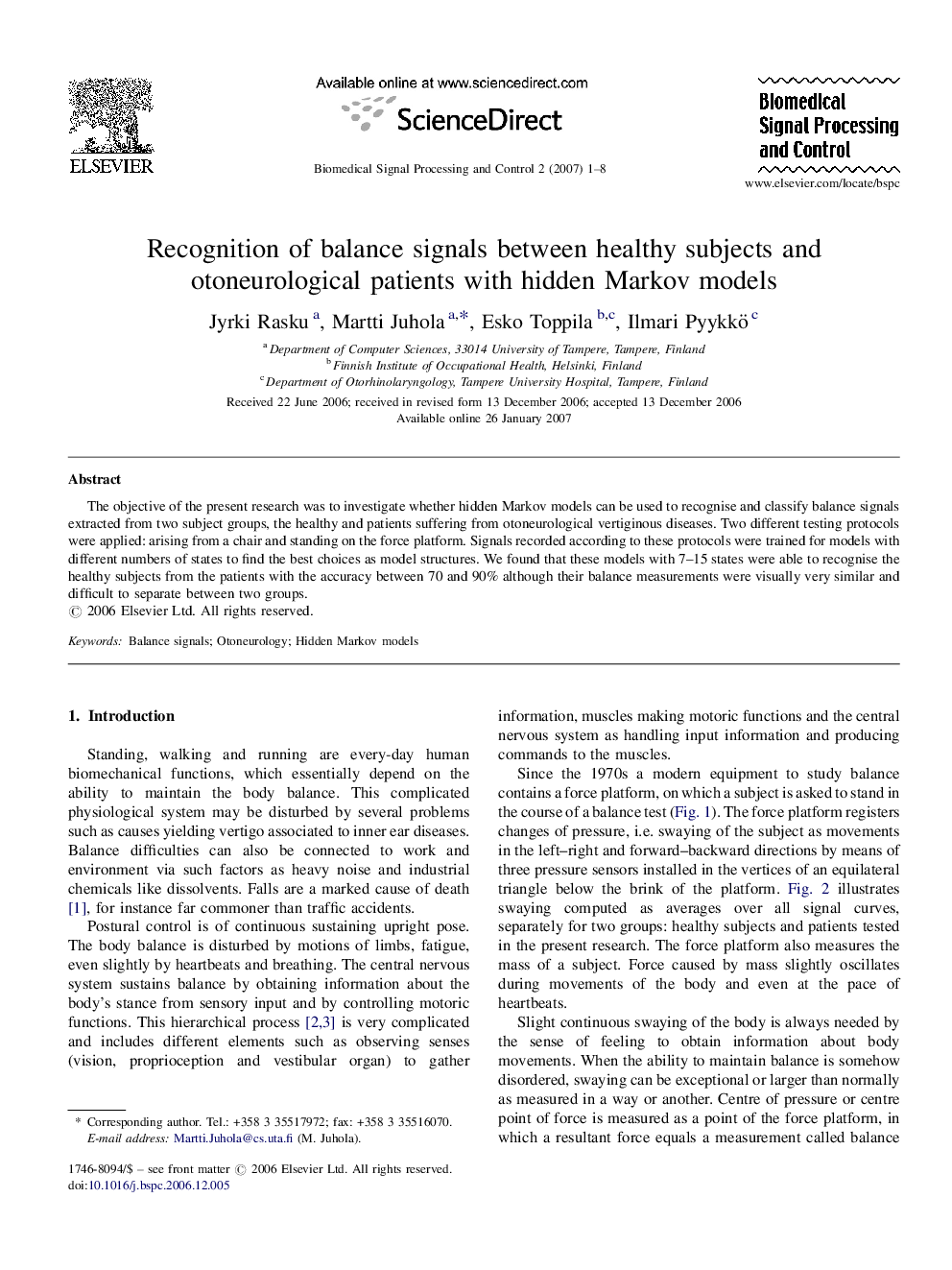| Article ID | Journal | Published Year | Pages | File Type |
|---|---|---|---|---|
| 562802 | Biomedical Signal Processing and Control | 2007 | 8 Pages |
The objective of the present research was to investigate whether hidden Markov models can be used to recognise and classify balance signals extracted from two subject groups, the healthy and patients suffering from otoneurological vertiginous diseases. Two different testing protocols were applied: arising from a chair and standing on the force platform. Signals recorded according to these protocols were trained for models with different numbers of states to find the best choices as model structures. We found that these models with 7–15 states were able to recognise the healthy subjects from the patients with the accuracy between 70 and 90% although their balance measurements were visually very similar and difficult to separate between two groups.
